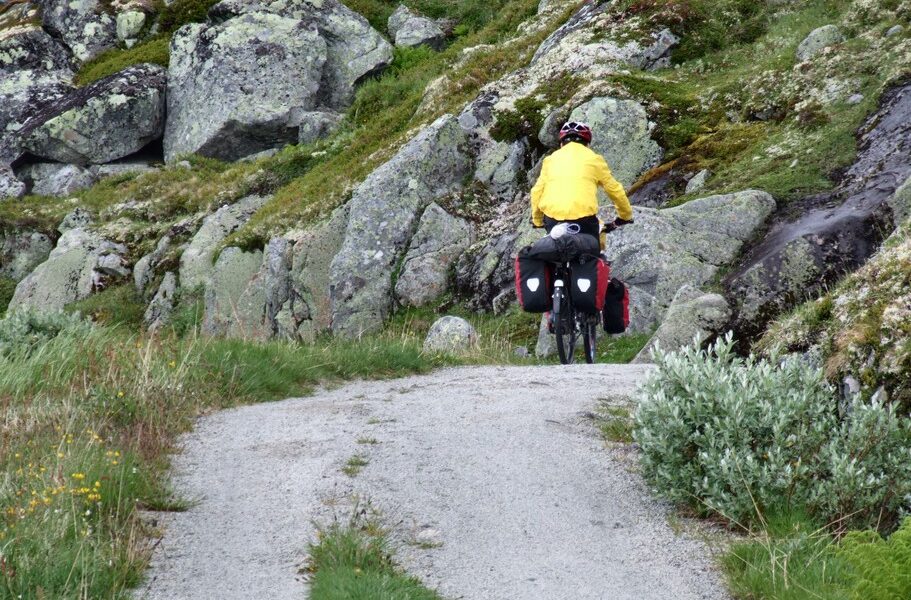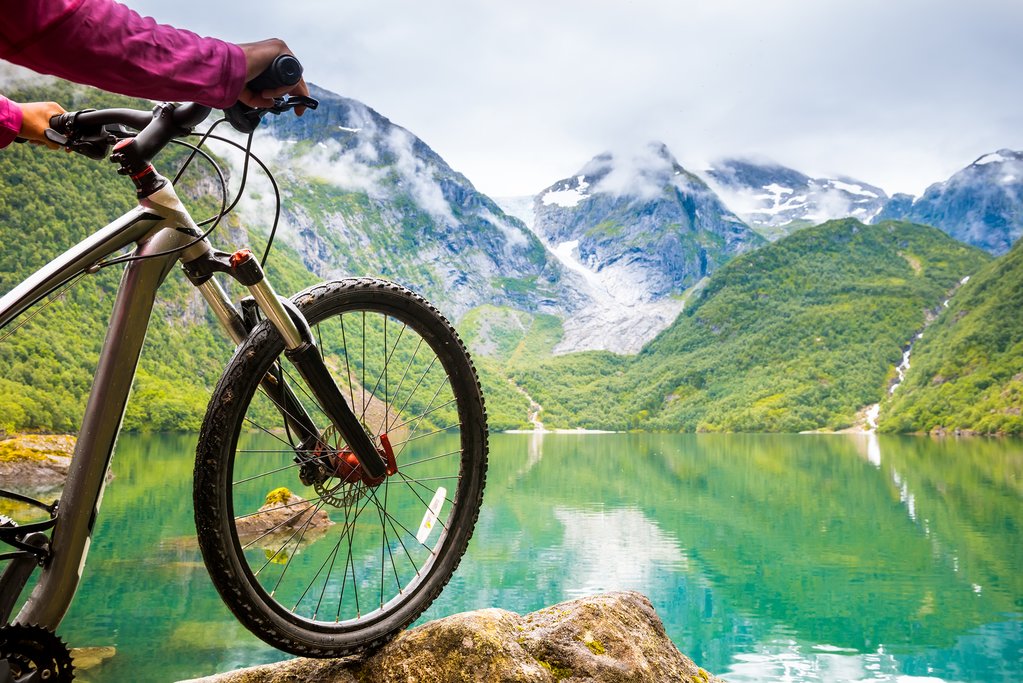
Even from behind windows and on four wheels, Norway is already jaw-dropping. But from two wheels, feeling the warm sunlight on your skin and rush of cool air? Unbelievable. Cycling across Norway is slowly catching on, and there are routes to be conquered and explored all across the country – read on for some of the best.
While the allure of exploring Norway on two wheels is undeniable, understanding the lay of the land – or rather, the winding roads – is key to crafting an unforgettable cycling adventure. While the open roads of Norway beckon cyclists from around the globe, promising breathtaking vistas and exhilarating rides, it’s important to note that certain regions stand out as particularly well-suited for accessible cycling, showcasing diverse landscapes, and offering a respite from the larger tourist throngs.
Bear in mind that you can tailor any of the routes highlighted below to perfectly match your travel style and desired level of support. You can enrich your journey with a private guided tour, benefiting from expert knowledge and logistical assistance, or you can embrace the freedom of independent exploration, charting your own course and discovering hidden gems at your own pace. Whichever path you choose, let’s delve into the captivating cycling experiences that await you in Norway.
## Rallarvegen: A Historical Cycling Journey
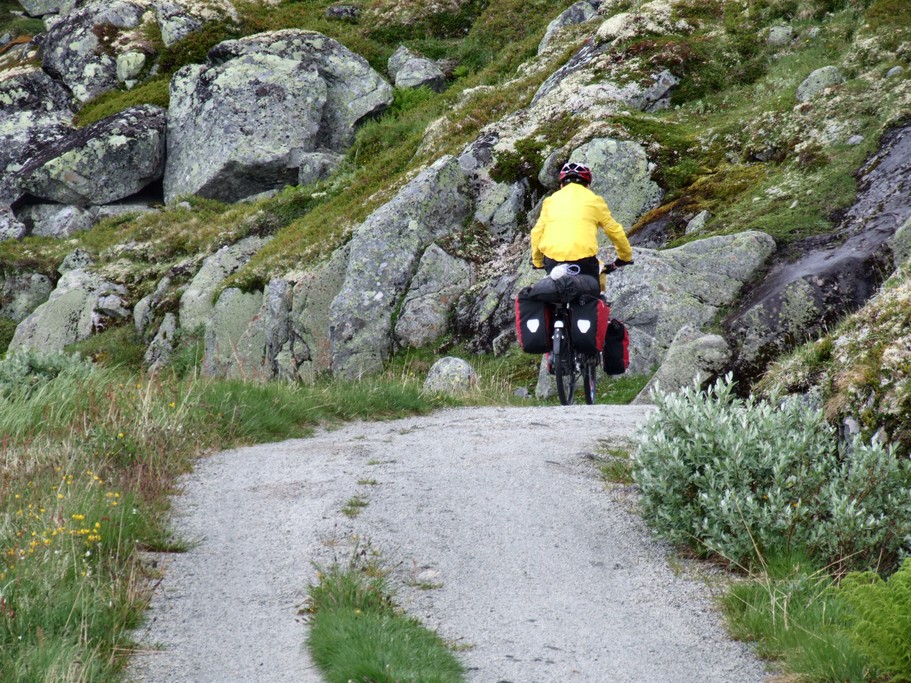
Considered by many to be one of Norway’s “finest bicycling roads,” the Rallarvegen is more than just a scenic route; it’s a living testament to the nation’s rich history. This iconic path, steeped in heritage, holds the distinguished title of a historical monument, adding an extra layer of intrigue to your cycling experience. As you embark on your Rallarvegen adventure, be prepared to conquer challenging steep ascents that will test your mettle and reward you with awe-inspiring panoramic views. The route also offers the thrill of speeding past cascading waterfalls, their thunderous roar adding a touch of drama to the picturesque landscape.
Keep your eyes peeled for the charming mountain goats that roam freely in the area, adding a touch of wildlife encounters to your cycling escapade. Throughout your journey, you’ll find yourself running parallel to the renowned Flåm Railway, a marvel of engineering that winds its way through the rugged terrain. Along the way, you’ll encounter markers that bear witness to the railway’s remarkable hand-built history, offering glimpses into the ingenuity and perseverance of the past. The Rallarvegen stretches for approximately 50 miles (80 km), a distance that might seem modest on paper, but one that packs an unforgettable punch in terms of scenery, challenges, and historical significance.
The Rallarvegen adventure commences at **Finse**, a charming village nestled amidst the breathtaking mountain scenery. From here, the route meanders along the outskirts of the majestic Hardangervidda Plateau, a vast expanse of unspoiled wilderness that offers a true sense of escape. As you continue your journey, you’ll reach its highest point at Fagervatn, soaring to an altitude of around 4,500 ft (or 1,400 m). At this vantage point, you’ll be rewarded with unparalleled views that stretch as far as the eye can see. From Fagervatn, the Rallarvegen embarks on its descent, eventually leading you to the picturesque fjord at **Flåm**.
To make the most of your Rallarvegen experience, it’s advisable to cycle westward. This strategic direction allows you to avoid the formidable 1,500-foot ascent around Taugevatn, a climb that can be particularly challenging at the beginning (or end, if you opt to buck the trend and travel in the opposite direction). Even with this westward approach, which ensures that the majority of your trek is downhill, you’ll still encounter a steep and winding section near Mydral Station. This exhilarating stretch, characterized by a series of 21 hairpin turns, will keep your adrenaline pumping and add a touch of excitement to your ride.
It’s worth noting that the Rallarvegen is a hugely popular destination, particularly during the high season. If you’re planning to rent a bike, which is readily available at the Finse train station and can be conveniently returned at Flåm, it’s highly recommended that you make a reservation well in advance to avoid disappointment. The popularity of the Rallarvegen is a testament to its allure, and for good reason. The views, the ever-changing scenery, and the overall landscape are simply breathtaking. If you’re contemplating taking the Flåm Railway specifically for the photo opportunities it offers, consider cycling the Rallarvegen instead, or perhaps even combine both experiences for an even more immersive adventure.
## Oppdal to Åndalsnes: A Journey from Mountain to Coast
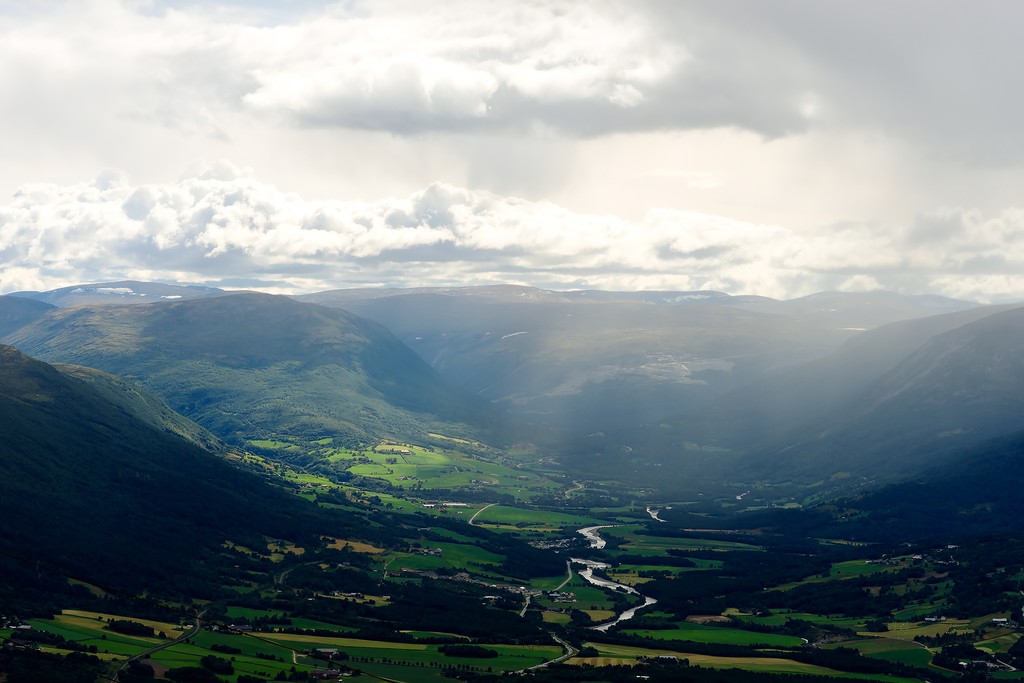
Located to the east of the charming city of Alesund and just north of the sprawling Dovrefjell-Sunndalsfjella National Park, lies **Oppdal**, a vibrant town that marks the starting point of this remarkable cycling route. From Oppdal, the journey unfolds over approximately four days, gradually leading you away from the majestic mountains and towards the captivating coastline at **Åndalsnes**. In essence, this route provides a delightful taste of two distinct worlds, offering a diverse geographical experience that showcases the best of Norway’s natural beauty.
Spanning a distance of approximately 150 miles (240km), this route presents a considerable challenge, requiring you to conquer nearly 13,000 feet of elevation (4,000m). The terrain is primarily composed of paved roads and gravel paths, offering a varied cycling experience that keeps things interesting. Your adventure begins high in the heart of national park territory, where you’ll find yourself surrounded by the mesmerizing sights and sounds of cascading waterfalls and abundant wildlife. As you progress, you’ll head towards the exhilarating descent down Eikesdalen by day two, a thrilling section that will test your cycling skills and reward you with breathtaking views. The journey then continues with a picturesque ride along the water’s edge to **Øverås**, a charming village that offers a tranquil respite. Finally, on day four, you’ll reach your destination at the Åndalsnes train station.
If your schedule allows, consider spending a night in Åndalsnes, allowing yourself ample time to recharge and soak in the beauty of this coastal town. From Åndalsnes, you’ll have convenient access to train services that can transport you back to Oppdal, or onwards to other captivating destinations such as Oslo or Trondheim.
## Tromsø and Beyond: Exploring the Arctic North
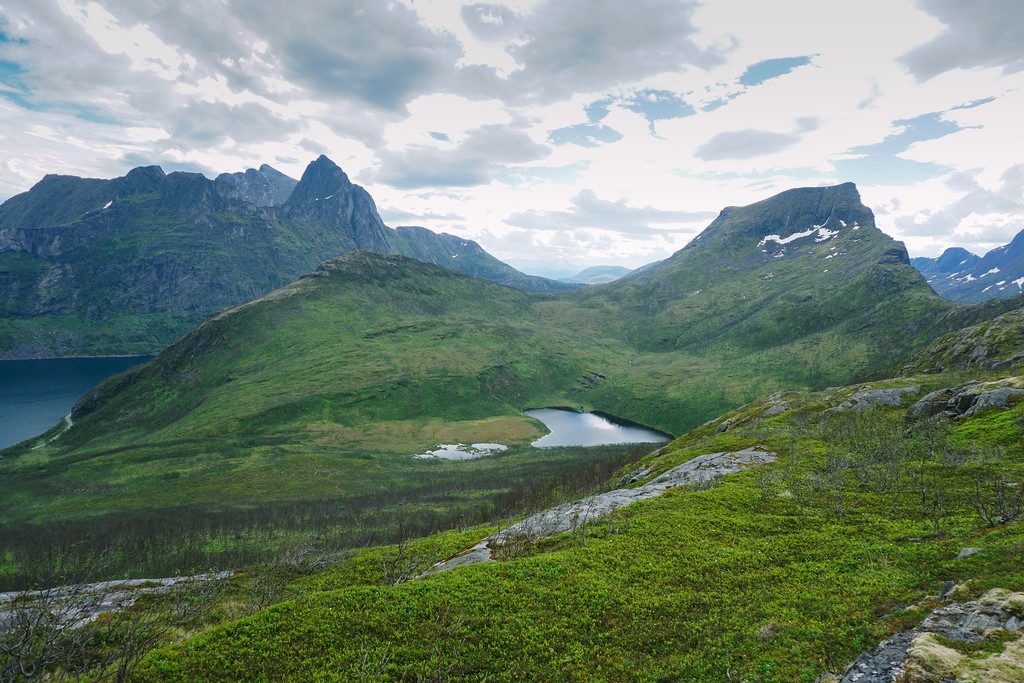
For cyclists seeking a more tranquil experience, particularly during the bustling high season, Northern Norway offers a refreshing alternative with its lighter crowds. If you’re based in or near the vibrant city of **Tromsø**, you’ll discover a range of exciting cycling options to explore the region’s unique landscapes.
One captivating route involves cycling from the city to Kaldfjord. The first two days of this adventure will take you to Svensby and the Nordlenangen lighthouse. From there, you’ll journey onwards to **Furuflaten**, a picturesque village nestled along the stunning Lyngenfjord. While in Furuflaten, consider taking a break from your cycling and indulging in a scenic hike. A short trek parallel to the water will lead you to the magnificent Steindalsbreen glacier, a breathtaking natural wonder that can be accessed via a relatively easy three-mile hike. Your cycling adventure will culminate in the charming village of **Kaldfjord**, which, as its name suggests, sits on the idyllic Kaldfjorden. Please note that you’ll need to arrange for transportation from Kaldfjord, as cycling back to Tromsø involves traversing a tunnel, which presents certain restrictions for cyclists (more on tunnel restrictions later).
Another enticing option is cycling from Tromsø to **Senja**, the second-largest island in Norway. From Tromsø, you’ll pedal approximately 35 miles (56km) to Sommarøy, a stunning island community located right on the edge of Norway’s coastline. Here, you can take a refreshing break from your cycling and perhaps even indulge in a swim in the invigorating Arctic waters. A short ferry ride will then transport you to Mefjordvær, a charming fishing village from where you can continue your journey along the Ersfjorden and Steinsfjord. You’ll then descend the exhilarating “Senja Troll,” a winding road that offers breathtaking views. The route continues back towards the mountains, eventually culminating at the finishing line in **Finnsnes**. Rest assured that this entire trek is characterized by an abundance of mountains, fjords, beaches, and water, creating a visually stunning and unforgettable cycling experience.
*Tip:* If your appetite for adventure remains unsated, consider continuing your journey onto the nearby island of **Andøya**. You can enjoy a relaxing ferry ride to reach Andøya, providing a welcome break from cycling. From Andøya, you can pedal to **Svolvær** and then board the renowned Hurtigruten, the coastal steamer, for a memorable voyage back through the iconic Troll Fjord.
## The Lofoten Islands: Cycling Through Paradise
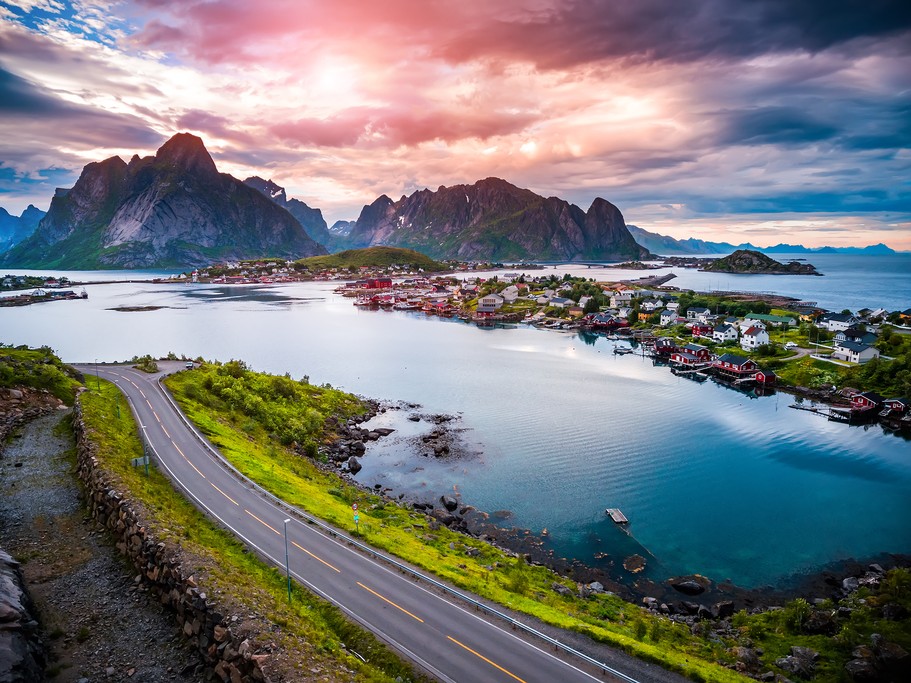
You could also begin your Lofoten cycling adventure in Svolvær. The route stretching from this island town to **Å** (another island town, located at the southern tip of the Lofoten archipelago) is gaining increasing recognition as a must-do cycling experience. Along the way, you’ll traverse some of Lofoten’s most celebrated villages and landscapes, including Reine (the subject of countless iconic aerial photographs) and **Henningsvær**, often referred to as the “Venice” of Lofoten. This route is not only visually stunning but also rich in history and opportunities for exploration. Your path will lead you past fascinating Stone Age settlements, the atmospheric ruins of old boathouses, and even a selection of impressive art galleries and meticulously maintained golf courses.
The ideal time to embark on this trek, as well as any cycling adventure in Northern Norway, is undoubtedly during the summer months. Outside of this period, you risk battling against the unpredictable forces of Mother Nature.
## Essential Things to Know
Cycling through a country as diverse and geographically complex as Norway requires a degree of preparation and understanding. While you don’t need to be an experienced cyclist, it’s essential to be well-prepared to ensure a safe and enjoyable experience.
First and foremost, summer is undeniably the easiest time to cycle in Norway, regardless of your chosen location. During the summer months, you can expect more favorable weather conditions, and in the northern regions, you’ll be able to take advantage of long biking hours, thanks to the enchanting midnight sun. However, it’s important to remember that the more popular tourist areas will naturally attract larger crowds, resulting in increased traffic on the roads. The more remote northern parts of the country tend to see fewer visitors, but this trend is gradually changing as more people discover the allure of the Arctic North.
If you’re planning a longer cycling trip that involves overnight stays, it’s worth noting that Norway boasts a network of public-access cabins that are available for travelers to use. You can carefully plot out your route and research the locations of these cabins online, with the Norwegian Trekking Association being a valuable resource for information. Alternatively, Norway upholds the remarkable law known as *allemansretten*, which translates to the freedom to roam. This law grants you the right to set up your tent virtually anywhere, provided you respect the environment and avoid leaving any trace of your presence.
If you’re opting for a self-guided cycling tour, it’s important to be aware of the regulations regarding cyclists in tunnels. Technically, cyclists are not permitted to cycle through tunnels. While you may occasionally encounter locals navigating the shorter, less-trafficked tunnels, this is generally not allowed. The reasoning behind this restriction is primarily due to safety concerns, as tunnels can be long and dimly lit, creating potentially hazardous conditions for cyclists. Keep this in mind when planning your route, and consider alternative side roads, even though main roads can sometimes be quite narrow, adding a bicycle into the mix of cars can be unnecessarily stressful.
With this in mind, embarking on a cycling adventure with a guide is a highly recommended option. A knowledgeable guide will take care of all the logistical details, including crafting the itinerary, arranging accommodation, providing food, and ensuring you have all the necessary gear. And even if you find yourself feeling uncertain about which option is the best fit for you, rest assured that regardless of how you choose to explore Norway on two wheels, you’re guaranteed to have an unforgettable and rewarding experience.
B-1965

